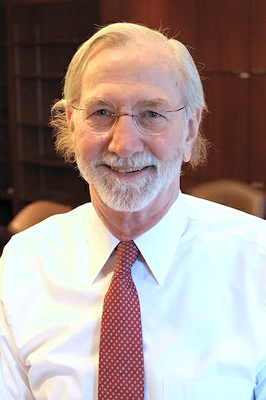International Research Consortium Identifies Five Genetic Regions Implicated In Cystic Fibrosis Severity

The International CF Modifier Consortium led by researchers from the University of North Carolina, the University of Toronto, Johns Hopkins University, Case Western University, and the University of Paris, along with some two dozen research institutions and departments in the United States, Canada, and France, are collaborating in the largest-ever cystic fibrosis genome-wide analysis to find new therapeutic targets for fighting the disease.
All persons born with two faulty copies of the CFTR gene will develop cystic fibrosis (CF), which causes thick, sticky mucus to build up in the lungs, causing congestion and making CF patients more susceptible to infections, such as pneumonia. Over the past two decades, however the disease severity in individual cases is somewhat dependent on environmental factors and many other gene variables. CF therapies have increased life expectancy for many patients, but disease symptoms vary widely even among patients with the exact same CFTR gene mutation. For instance, a six-year old could have severe disease, poor lung function, and endure multiple hospitalizations while a 25-year old may have nearly normal lung function and never be hospitalized until much later in life.
The difference lies, in part, in five regions of the human genome genetic regions that the Consortium’s 12-year research project has identified and investigated, reporting reports that these regions are home to genetic variations that play major roles in CF disease severity. It is proposed that locating the appropriate genes and altering their function could lead to new CF therapies.
The Consortium analyzed more than 8.5 million SNPs or DNA sequence variations over the span of 12 months to find the five genetic locations on chromosomes 3, 5, 6, 11, and X that were significantly associated with variation of lung disease.
Consortium scientists are now trying to link these genetic polymorphisms to gene expression the amounts of proteins that genes create. This would allow them and other researchers to design more targeted therapies to lessen disease severity, decrease infections and hospitalizations, and prolong life.
Resulting from this multi-year project, researchers at the University of North Carolina School of Medicine, the UNC Marsico Lung Institute and Case Western University are lab-testing drugs against targets related to two of these regions. The investigators believe these drugs have potential to improve lung disease symptoms in some CF patients. Currently, the international research consortium is homing in on ways to influence these genetic locations to benefit CF patients.
The Open Access study, published in the journal Nature Communications, is the largest-ever genome-wide association study of cystic fibrosis or for that matter any other rare disease. Samples from 6,365 people with cystic fibrosis (CF) were collected over the course of several years at dozens of cystic fibrosis centers in order to make the project possible.
The Nature Communications paper, entitled “Genome-wide association meta-analysis identifies five modifier loci of lung disease severity in cystic fibrosis“ (Corvol, H. et al. Nature Communications 6, Article number: 8382 doi:10.1038/ncomms9382) is coauthored by Harriet Corvol, Scott M. Blackman, Pierre-Yves Bolle, Paul J. Gallins, Rhonda G. Pace, Jaclyn R. Stonebraker, Frank J. Accurso, Annick Clement, Joseph M. Collaco, Hong Dang, Anthony T. Dang, Arianna Franca , Jiafen Gong, Loic Guillot, Katherine Keenan, Weili Li , Fan Lin, Michael V. Patrone, Karen S. Raraigh, Lei Sun, Yi-Hui Zhou, Wanda K. O’Neal, Marci K. Sontag, Hara Levy, Peter R. Durie, Johanna M. Rommens, Mitchell L. Drumm, Fred A. Wright, Lisa J. Strug, Garry R. Cutting, and Michael R. Knowles.
Noting that cystic fibrosis (CF) caused by loss-of-function variants in CFTR, affecting some 70,000 individuals worldwide. Although CF is regarded as a single-gene disorder, the coauthors note that patients with similar CFTR variants may exhibit substantial variation in severity of lung disease, of which more than 50 percent is explained by non-CFTR genetic variation. Consequently, identification of small molecules that target specific CFTR variants has ushered in a new era of cystic fibrosis treatment, although optimal individualized treatment will require identification and targeting of disease modifiers.
The researchers observe that the advent of large-scale genome-wide association studies (GWAS) and capability for imputation has made it possible to explore millions of polymorphisms in search of genetic determinants of phenotypic variation. The paper includes a meta-analysis of both imputed and genotyped variants that combines data from the new subjects with the previously reported GWAS, allowing for an unprecedented sample size of 6,365 CF patients and analysis of over 8 million variants. To maximize power, linear mixed models are used to allow for inclusion of CF-affected siblings. The coauthors report that combined analysis confirms a previous genome-wide association and identifies four new loci containing genes with high biological relevance for pathophysiology of CF lung disease.
 “It has been an unprecedented undertaking to enroll this many patients and have this kind of data output,” says Michael Knowles, MD, professor of pulmonary and critical care medicine at UNC and one of three senior co-authors in a UNC release. “It’s mind-boggling that five regions of the genome pop out of all this data from millions of SNPs [single nucleotide polymorphisms or genetic variations] that we analyzed.”
“It has been an unprecedented undertaking to enroll this many patients and have this kind of data output,” says Michael Knowles, MD, professor of pulmonary and critical care medicine at UNC and one of three senior co-authors in a UNC release. “It’s mind-boggling that five regions of the genome pop out of all this data from millions of SNPs [single nucleotide polymorphisms or genetic variations] that we analyzed.”
The overall goal of study associated research at the UNC Pulmonary and CF Research Center is to better understand key host defense mechanisms in the conducting airways, and disease mechanisms that play a role in the development of non-asthmatic airways disease. The UNC clinical research group is involved in a broad range of studies in human subjects, which interfaces with the basic research efforts at the UNC Research Center.
The research group say their long-standing hypothesis is that mucociliary and cough clearance are the dominant host defense mechanism in the airways, recognizing that abnormalities of salt and water metabolism, dysfunction of cilia, and abnormal mucus all impair these important defense mechanisms, and lead to disease.
Three genetic models of human airways disease illustrate the UNC group’s strategic approach to better understand these host-defense systems, with CF the genetic model of human airways disease that illustrates the importance of salt (and water) transport for normal mucociliary (and cough) clearance. Specifically, they observe that CF reflects mutations in the CFTR gene, which regulates volume and composition of airway surface liquid. In CF, excessive salt (and water) absorption (driven by active Na+ transport) leads to thickened mucus, which is not cleared by either mucociliary or cough clearance. The UNC team cites previous studies that clearly confirm the CF airways defect reflects excessive isotonic volume absorption, observing that recent studies have focused on more subtle alterations in the ion composition of airway surface liquid, which may involve defective bicarbonate transport or abnormal regulation of pH. These possibilities are being tested with ion selective microelectrodes in vivo, using the nasal surface liquid as a model of lower respiratory epithelial function.
Poor airway secretion clearance in CF also leads to chronic bacterial infection of the lower airways, usually with Pseudomonas aeruginosa or Staphylococcus aureus, but recent studies from UNC also indicate that nontuberculous mycobacteria (NTM) is recovered from the respiratory samples of ~15% of adult CF patients. The predominant NTM organisms are Mycobacterium Avian Complex (MAC) and Mycobacterium Abscessus. A multicenter study is currently underway to define the clinical impact of NTM in CF. Another study is focused on testing for genes (genetic alleles) that predispose non-CF (apparently “normal”) subjects to pulmonary infection with NTM, which should identify genes that increase the risk to infection with NTM.
 “I am excited to see the fruits of this project that began in 2000, says Preston W. Campbell III M.D., Executive Vice President for Medical Affairs for the Cystic Fibrosis Foundation. “Identifying the genetic underpinnings for differences in CF lung disease will hopefully inform our precision medicine efforts and spur further drug development. This work is integral for CF patients because moderately improving the function of the CFTR gene, alone, wont necessarily be enough to optimize lung function for most people with the disease.”
“I am excited to see the fruits of this project that began in 2000, says Preston W. Campbell III M.D., Executive Vice President for Medical Affairs for the Cystic Fibrosis Foundation. “Identifying the genetic underpinnings for differences in CF lung disease will hopefully inform our precision medicine efforts and spur further drug development. This work is integral for CF patients because moderately improving the function of the CFTR gene, alone, wont necessarily be enough to optimize lung function for most people with the disease.”
In addition to drug discovery and development, Dr Campbell is responsible for overseeing clinical research, the CF Foundation’s network of specialty care centers, training programs and other medical components, including the national patient registry database. In addition to his responsibilities at the CF Foundation, Dr. Campbell continues to see patients at the Johns Hopkins Hospital in Baltimore.
A new CF drug was introduced in July designed to repair the Delta-F mutation which is the most common CFTR mutation. However, the drug does not provide a complete fix, and for some people with the Delta-F mutation, it doesn’t work at all.
 “The reason lies in part in these modifier genes found within the five genome locations we’ve identified,” explains Garry Cutting, M.D. , professor of pediatrics and medicine at Johns Hopkins and senior co-author of the Nature Communications paper. “Some of these genes create proteins that have a functional interaction with the CFTR gene, or have complementary roles to protect the lung against ongoing damage. They play important supporting roles to make sure the CFTR protein and other proteins and protective mechanisms work properly. We need to influence these modifier proteins in order to lessen the severity of disease for patients.”
“The reason lies in part in these modifier genes found within the five genome locations we’ve identified,” explains Garry Cutting, M.D. , professor of pediatrics and medicine at Johns Hopkins and senior co-author of the Nature Communications paper. “Some of these genes create proteins that have a functional interaction with the CFTR gene, or have complementary roles to protect the lung against ongoing damage. They play important supporting roles to make sure the CFTR protein and other proteins and protective mechanisms work properly. We need to influence these modifier proteins in order to lessen the severity of disease for patients.”
Dr. Cutting’s clinical and educational activities are focused on laboratory diagnostics, and he is Director of the DNA Diagnostic Laboratory and Director of the Clinical Genetics Laboratory Training Program at Johns Hopkins University School of Medicine.
 Lisa Strug, PhD, one of the paper’s senior co-authors, associate professor of biostatistics, and senior scientist in the Program in Genetics and Genome Biology at the Hospital for Sick Children in Toronto, observes that “The ongoing work of the consortium to discover and translate genetic determinants of disease variability in cystic fibrosis is leading to personalized therapeutic approaches to improve outcomes for all individuals with the disease.”
Lisa Strug, PhD, one of the paper’s senior co-authors, associate professor of biostatistics, and senior scientist in the Program in Genetics and Genome Biology at the Hospital for Sick Children in Toronto, observes that “The ongoing work of the consortium to discover and translate genetic determinants of disease variability in cystic fibrosis is leading to personalized therapeutic approaches to improve outcomes for all individuals with the disease.”
The National Institutes of Health, The Cystic Fibrosis Foundation, Cystic Fibrosis Canada, and The Canadian Institutes of Health Research funded this work.
Sources:
The University of North Carolina
Nature Communications
Cystic Fibrosis Foundation
Johns Hopkins University
Case Western University
The University of Paris
Hospital for Sick Children in Toronto, Canada







